Review: Eduard 1/48 A6M2-N "Rufe"
The Airplane:
Following delays in the design and development of the Kawanishi N1K1 floatplane fighter, Nakajima designed and produced the A6M2-N (Navy Type 2 Interceptor/Fighter-Bomber) as a single-seat floatplane based on the Mitsubishi A6M Zero Model 11. The Allied reporting name for the aircraft was “Rufe.”
The A6M2-N was based on the A6M-2 Model 11 fuselage, with a modified tail and added floats. It's main purpose was to support amphibious operations before a land base could be established, and to defend remote bases. A total of 327 were built, including the original prototype.
The prototype flew on December 7, 1941. No problems were encountered and it immediately entered production, with the first examples being allocated to combat units in early May 1942. The A6M2-N was pressed immediately into the Solomons and Aleutian campaigns. In the Solomons, the airplane proved to be far more of a problem for Allied fighter pilots than its somewhat-ungainly appearance suggested, since it was only slightly less maneuverable than the land-based Zero; its primary problems were its relatively low top speed of around 270mph and lower climb rate compared with the land-based Zero.
The first A6M2-Ns were assigned to the Yokohama Kokutai at Rabaul, arriving in early June 1942. This small detachment was further dispersed to Tulagi at the southern end of the Solomons chain, where they were to provide cover for construction of an airfield on neighboring Guadalcanal. Several were destroyed on the water during the American landings in August. Later, a detachment operated from nearby Rekata Bay and the A6M2-Ns often tangled with Wildcats over Henderson Field.
A second unit was assigned to the Toko Kokutai, operating in the Aleutian Islands. This detachment was deployed to Kiska island. During the “Kiska Blitz” they opposed bombing raids on every day that the weather allowed. The unit first engaged in combat on August 4, 1942, intercepting B-24s over Kiska. They had occasional success against American fighters. Following the recapture of Attu and Kiska, the 452 Kokutai also operated A6M2-Ns from Paramushiro in the Kurile Islands, attempting defend these remote northern islands from American attacks. The A6M2-N also saw service aboard he Japanese raiders Hokoku Maru and Aikoku Maru in Indian Ocean raids.
Rufes shot down B-17s and B-24s in both the Solomons and Aleutians, and were successful against the F4F-4 Wildcat, P-39 Airacobra, P-40 Warhawk and P-38 Lightning if these fighters attempted to engage the Rufe at speeds under 250mph, as was the case with the land-based Zero. In 1944, the Otsu Air Group flew the A6M2-N as an interceptor alongside the Kawanishi N1K1 Kyofu, based on Lake Biwa on Honshu.
The kit:
The first 1/48 A6M2-N kit was produced by Tamiya and appeared in 1973; that kit is still available today and makes up into an acceptable model, though it has several unfixable mistakes. This was followed in the 1990s by Hasegawa, with a better, more accurately detailed kit.
Eduard's Rufe is part of their Zero collection, and is as highly detailed as the A6M2 and A6M3 kits released so far, making it the best kit of the A6M2-N if accuracy and solid detail are the criterion.
This first release of a double kit includes decals for no less than eight different airplanes. The Profipack single kit release came out in August 2023, a month after the release of the Double Kit.
Construction:
Outside of the floats instead of landing gear, this kit makes up similarly to the other Eduard Zeros. If a modeler takes care in cleaning up all mating surfaces and takes their time with assembly, no filler will be necessary.
The central pontoon has the forward lower section separate, which allows a modeler to attach sufficient weight in the front end of the pontoon to allow the model to sit right in its cradle without tipping back on its tail.
Painting:
I used Gunze-Sangyo "Nakajima Cockpit Green" for the cockpit, and Tamiya XF-76 “IJN gray-green,” which is actually the Nakajima version of this color for the overall airframe. I used Mr. Color C-15 “Nakajima Dark Green” for the upper color, which was applied in the field over the gray-green; I made sure that this application allowed “holes” for the lower color to show through.
Decals:
Kit decals were used. I do not involve myself with trying to lift off the decal film on Eduard decals; I just use them in the traditional method since I am not interested in harming the decals in the last stage of the project.
Final finish and assembly.
I applied light weathering to the model. The history on this airplane is that it didn't last that long after it received the field-applied camouflage.
Overall:
The Eduard Rufe is up to the quality level of their other Zero kits, making this the best kit available of the A6M2-N. Recommended for all fans of Japanese naval aviation.
Thanks to Eduard for the review kit.
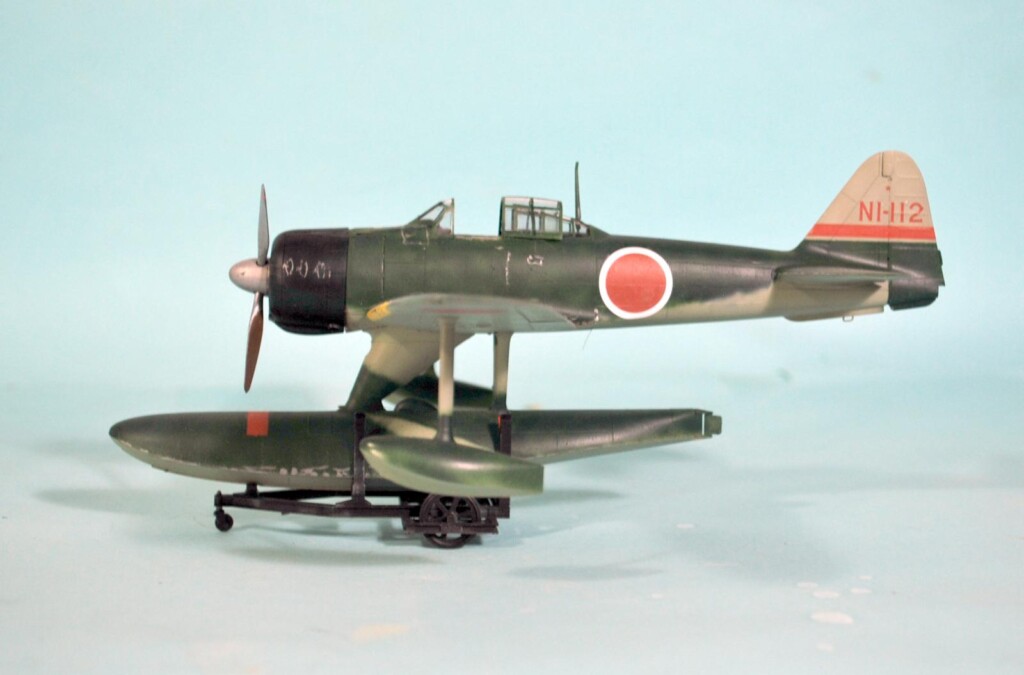
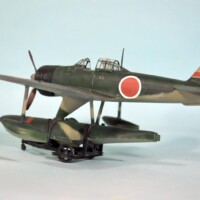
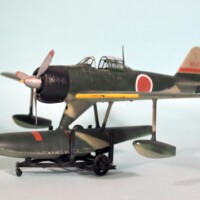

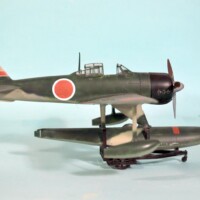
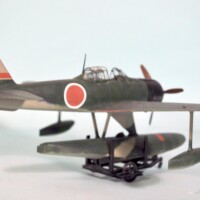
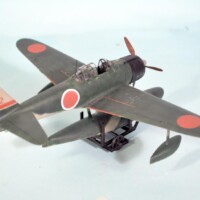
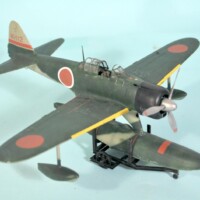
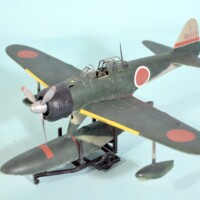
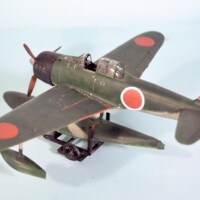
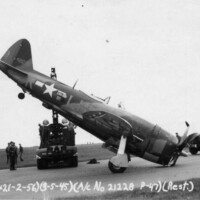

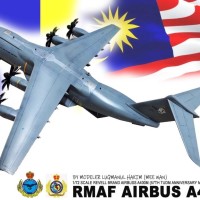
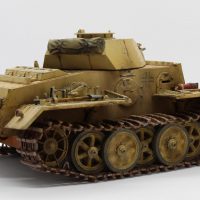
Well done, Tom. Great paintwork with lots of visual interest on this.
Another nice one, Tom. Thanks for the history narrative, too.
I want one. One. LHS has the dual kit. Trying to get the kid to split it with me.
Another winner, Tom! Kot, build, article, all excellent!
Such a cool plane and a beautiful build. I noticed those subtle variations of green, i love the tonal changes it creates! Also, i did not know that they were serious foes and not just sitting ducks.
Lovely work Tom. I really like that scheme, with the lighter tail top.
I like Your painting very much!
Very nice paint finish.
An excellent result - Nice work with a quality product.
Good looking Rufe Tom. I just picked one of these up for $40 shipped and intend to start it soon.
Tom Cleaver (@tcinla)
Nice work on the Rufe, and an interesting article as well. I took your advice and picked up several of the Eduard Zeros. Believe me, this kit was very tempting too. They recently had a Kawanishi "Rex" delivered at the restoration shop. It's one of only 3 left in the world now. I was able to get tons of pictures of it, documenting a lot of the original colors that were hidden inside of it. These Japanese float planes are uber rare items today. Most of them ended up becoming beer cans and step ladders. Sad but understandable with all things considered at the time.
I was totally unaware of this kit. I like your build and review Tom, @tcinla. I am not one to build Japanese planes but everything I see and read about these Eduard kits makes that zero very very tempting.
Great build Tom
Nice work Tom , she looks great on the beaching trolley.
For once, a Rufe in a beaching trolley not sitting on its tail!
Ha ha ! while I eagerly await my back ordered Airfix Gannet I am building the ancient Airfix 1/72 Arado floatplane that does not come with one of those lovely old school clear stands in the shape of a letter A , so I will have to think something up to pose it in flight mode...
Excellent work done, Tom @tcinla
Both, build and historical part are a pleasure to go through.
A Rufe is still on my wishlist and I definitely added the name of Eduard to it as a potential candidate.
Tom,
Very admirable. Super-cool subject.
Great build and article. Eduard must have a sinister plan to relieve me of my retirement funds with all the new stuff coming out!
It's a conspiracy!
Beautifully executed Rufe and text, TC @tcinla. The tail markings really give it character. Great choice.